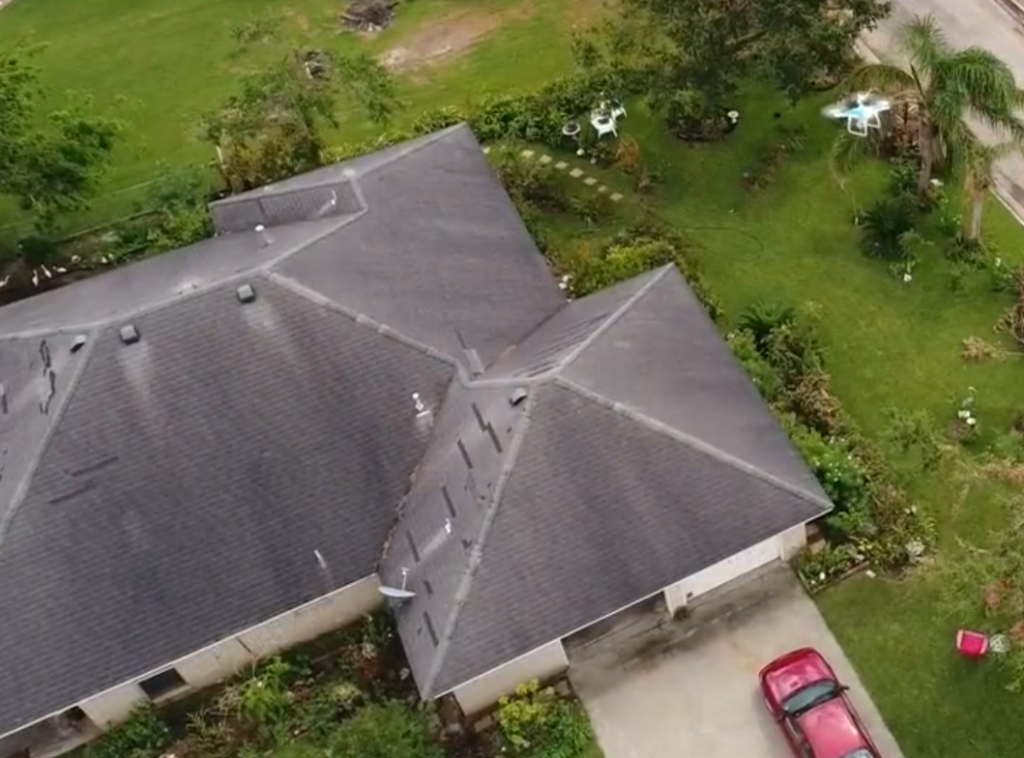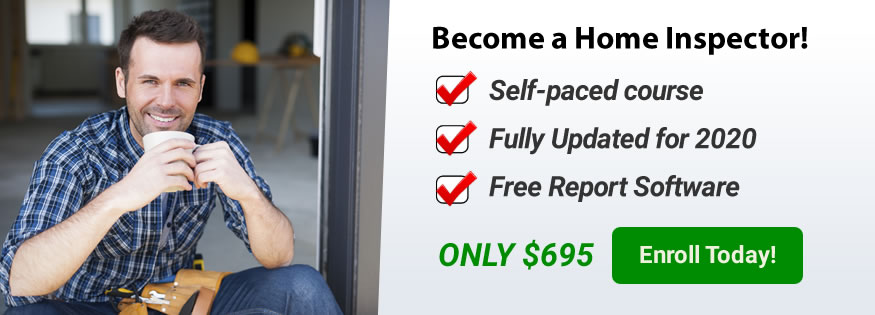Drones in Home Inspections—How Drones Are Helping Home Inspections Become Safer, Faster, and More Efficient
BY Zacc Dukowitz
29 July 2020In this article, we’re going to cover all the ways that drones are helping to revolutionize home inspections.
If you’re a certified drone pilot, collecting aerial footage of a building’s roof as part of a home inspection could present a new way for you to make money.
You could also take this a step further, and become a certified home inspector yourself. In fact, home inspection work may present a sweet spot for commercial drone pilots, since home inspectors work directly with realtors—which means that, between home inspections and real estate marketing, you might be able to build an entire business focused on real estate work in your area.
If you’re interested in becoming a certified home inspector, check out Inspection Certification Associates (ICA), a remote certification course that provides home inspector training for every state in the U.S. Their course features 28 well-crafted videos created by a variety of home inspection experts, who walk you through everything you need to know to start working for yourself as a home inspector. Once you complete the course, you can use your course certificate to get your state home inspector’s license.
ICA’s course includes lifetime marketing support to help you build and grow your home inspection business, as well as over 15 bonus courses for things like mold or radon to help you make extra money. Jump down in this article to learn more about ICA Schools, or read on to find out how drones are being used in home inspections today.
Interested in signing up for ICA Schools? UAV Coach readers can get a $25 discount by entering the code drone25 when purchasing the course.
5 Benefits of Using Drones in Home Inspections
Over the last few years, insurance companies have started using drones for roof inspections following storms, to help adjusters quickly collect aerial data for claims investigations.
This use case has become so common that Loveland Innovations has created software just for drone roof inspections, and last year State Farm was the first company ever to receive a national waiver from the FAA for drone operations over people and Beyond Visual Line of Sight (BVLOS), so that they could use drones for investigating insurance claims.
Lately, we’ve been hearing about a new type of roof inspection where drones are being used—inspections conducted as part of an overall property inspection made to assess the value of real estate.
For home inspectors working in residential or commercial real estate, the ability to quickly and safely collect data on the condition of a building’s roof is a huge value.
Without a drone, inspectors may have to climb a ladder, often without anyone there to spot them, or walk around craning their neck up, shading their eyes from the sun. And with some buildings, accessing the roof in person is simply impossible.
But not so with a drone—here are five of the main benefits drones provide for home inspections:
1. Safety
Using a drone to collect aerial photos and video of a roof can replace the need for an inspector to climb onto and walk across the roof, which is one of the most dangerous parts of any home inspection.
2. Accessibility
Some roofs are completely inaccessible because they’re too high, too steep, too wet, or they’re made of materials such as clay tiles that make walking on them dangerous. In addition, some roofs have tall chimneys or other features that are impossible to access.
Inspectors can use tools like camera poles to try and address accessibility issues, but those tools are limited in what they can capture, and can’t always provide the level of detail needed.
Drones solve accessibility issues by giving home inspectors an easy method for collecting visual data on the condition of a roof without having to climb the building and walk across it.
3. Customer satisfaction
Before drones, home inspectors who encountered inaccessible roofs were put in the difficult position of having to tell clients that they couldn’t provide any information on the condition of the roof.
In these instances, which are not uncommon, clients may have to pay extra to hire roofing companies to collect roof data or simply accept the risk of not knowing about the state of the roof.
But using a drone, home inspectors don’t have to be deterred by inaccessible roofs, and can help make their customers happy by collecting all the information needed to assess the value of a piece of property.
4. Efficiency
Given limitations in flying and the quality of a given drone model’s camera, it’s not always possible to use a drone to collect all the information needed for a roof inspection.
However, drones can make roof inspections much more safe and efficient by providing inspectors with a quick review of the entire structure, highlighting potential problem areas that may need more attention or that may present safety risks.
For example, drones can allow inspectors to see where a roof may be sagging or may have a weak spot, and this information can be invaluable for inspectors when they climb onto the roof to perform their manual inspection.
5. Marketing
Who doesn’t love a good aerial shot?
Home inspectors who use drones have reported that the drone provides an additional value beyond its usefulness for the inspection itself. Aerial video and photos provide inspectors with dynamic materials they can use to showcase the quality of their work and catch the eye of potential clients.
How to Get Work Doing Home Inspections with Your Drone
Some home inspectors hire freelance drone pilots to collect visual data on the condition of a property’s roof. DroneBase, for instance, offers this kind of service to clients, and is a place where drone pilots might be able to find this kind of work.

However, there doesn’t seem to be that many jobs out there for this specific type of work—a search for ‘drone home inspections’ on Indeed.com returned 122 results for the entire U.S. (and many of them aren’t specifically for commercial drone pilots).
But that doesn’t mean that home inspections might not be a lucrative line of work for ambitious drone pilots.
How so? Instead of only providing the roof inspection data for a home inspection, drone pilots could consider becoming certified home inspectors and get paid for the entire job.
Home inspections typically cost anywhere from $300 to $500 and take 2-4 hours, which means you can do 1-3 of them on a given workday. By becoming a certified home inspector, drone pilots could add a reliable—and potentially lucrative—revenue stream to the work they do.
Home inspection work could also serve to help drone pilots secure more real estate marketing work by providing them access to potential clients, aerial photos and video to use in building their portfolios, and a reliable income stream. Between home inspection work and real estate marketing work, freelance drone pilots might be able to build an entire career focused on working for themselves in the local real estate industry.
So how do you become a home inspector?
Requirements vary by state, but in general you have to follow a process similar to the FAA’s 107 requirements for becoming a professional drone pilot.
Most states require that you go through a home inspector training program, which will grant you a certificate of completion that can then be used to secure a home inspector license.
Want to Become a Home Inspector?
After researching the different home inspector training programs on the market, we’ve decided to partner with Inspection Certification Associates (ICA), a remote certification course that provides remote trainings for every state in the U.S.
Here are some key details about ICA’s Home Inspection Training and Certification Online:
- The course provides lifetime access to 28 home inspector training session videos, 20 ebooks, as well as lifetime technical and marketing support. Marketing support includes a free lifetime listing on HireanInspector.com.
- Live instructor support via chat, email, or phone.
- The course is self-paced, so you can do it on your own time.
- Most people complete the entire course in 3-4 weeks, working about two hours a day.
- The course includes lifetime access to professional home inspection report software, which lets home inspectors complete their reports on smartphones or tablets.
- The course also includes free access to over 15 bonus courses on topics like mold and radon inspections.
If you decide to sign up for ICA’s online training and certification, make sure to use the code drone25 when checking out to get $25 off.
Learn more about ICA and how to become a home inspector in your state here.
Already working in home inspections as a drone pilot, or know someone who is? Share your experiences in this thread on the UAV Coach community forum.





